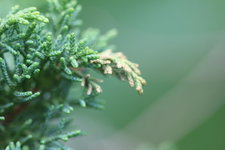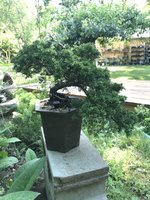Here’s some scale information you probably already researched:
“There are many species of scale insects that feed on a wide range of host plants. Scale insects are a unique group, that look quite different from other insects. In their juvenile growth stage, they are referred to as “crawlers.” As crawlers, they are highly mobile, six-legged, have no protective cover, and are usually smaller than a pinhead. However, at maturity, scale insects are immobile, have no visible legs or antennae, and in the case of armored scales, are covered with a protective shell that ranges from about 1/16-to-3/8-inches in size.
Scale insects can be divided into two groups: armored scales and soft scales. Armored scales secrete a protective cover over their bodies and usually overwinter as eggs beneath the female cover. Soft scales are usually larger, lack the protective cover, but protect themselves with waxy secretions. Most soft scales overwinter as immature, fertilized females.
THE MORTON ARBORETUM.”
In your photos you show juvenile growth stages. These crawlers can be blown by the wind to other woody plants/trees.



